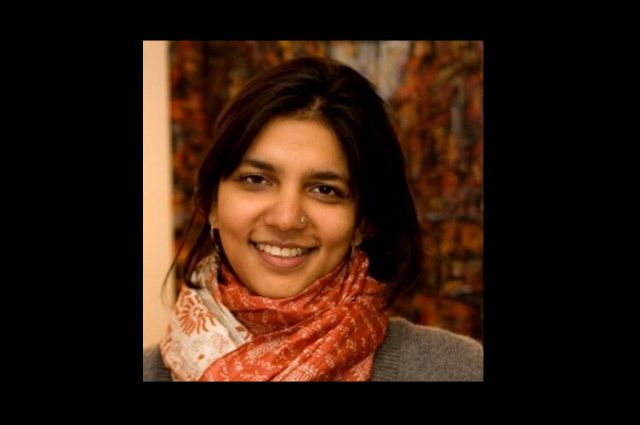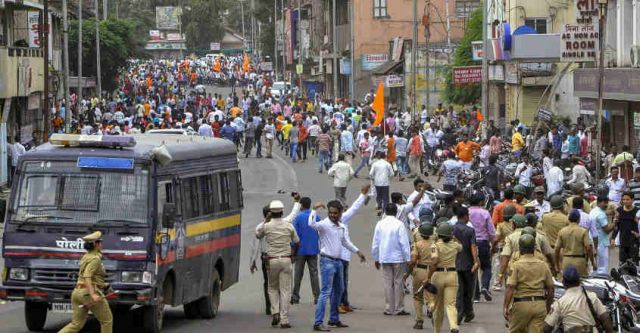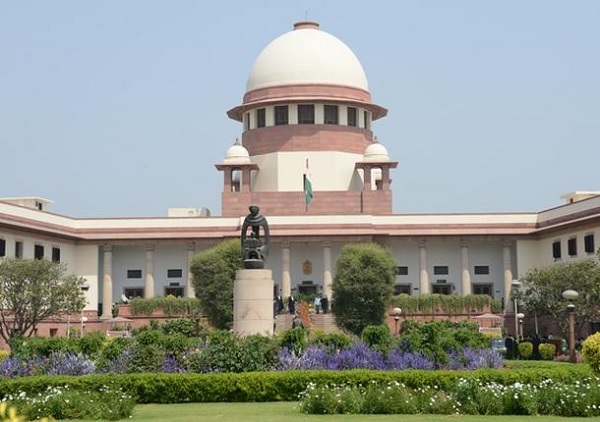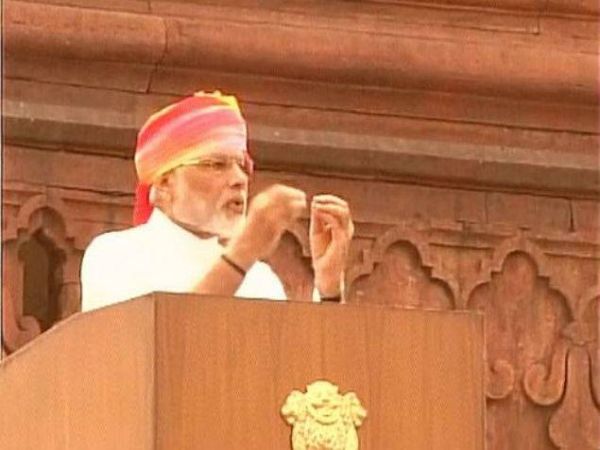
by admin | May 25, 2021 | Interviews, News

Malvika Maheshwari
By Saket Suman,
New Delhi : Attacks against artistes are happening not just because of “the rise of any particular ideology over the last two-three decades”, nor is it a result of “one or two political parties exploiting communalism or religiosity”. Instead, according to Malvika Maheshwari, whose upcoming book “Art Attacks: Violence and Offence-Taking in India” presents a dismal picture of the turmoil that artistes are facing in the country, it is because of the complicated nature of democracy — where votes ratify power.
“To win and maintain this otherwise unattainable power, political parties over time began to exploit entire energies of their cadres and constituencies, first by persuasion, and, if not, by coercion. This capacity of democracy to both birth and nurture violence as a norm rather than as an exception not just placed severe limits on the imagination of the Constitution’s liberal project but its perversion provided for an entire infrastructure for ‘self-appointed gate-keepers of culture’ that helped them convince themselves and their publics of the value of these attacks,” Maheshwari, an Assistant Professor of political science at Ashoka University, told IANS in an interview.
Her book tells the story of violence against artistes in India, marked by the intensifying sense of insecurity, fear, frustration and anger within the art world. As opposed to simply adding to the prevalent commentaries on violent regulation of free speech in India, “Art Attacks: Violence and Offence-Taking in India” focuses on the dynamics of violence in that regulation.
Maheshwari, who was previously a research associate at the Centre for Policy Research here, said that such attacks are not just a phenomenon of the rise of “anti-liberal” sentiments as much as they are a phenomenon of the perversion of the liberal language.
“A lot of the attacks are justified and ‘performed’ by using statements of righteousness, not simply in the religious sense, even if they act in religion’s name, but rather through a morally-charged language of rights, respect, and justice, a language through which they hope to legitimise this violence. The attacks show how much this language has travelled, been copied and manipulated, for instance, through the tussle inherent in the arrangement and prioritisation of free speech over equal respect or dignity,” she added.
She stressed that there are individuals at the forefront of these attacks, those who “physically assault and vandalise”. She said that they come from “a particular social and economic class” and these attacks become a way for them “to resolve anxieties around status, recognition and respect”.
“It enables them to separate themselves from those of their own social group, but also distinguish themselves from their colleagues in their organisations, of which they are part themselves. Most importantly, these men are deeply informed by the glory and success that violent actions in the past may have brought to their leaders.
“So we need to understand that this form of collective violence is dependent on democracy’s rhetoric and processes, and even while being ‘anti-democratic’, they cannot be regarded simply as a deterrent to its routines. It needs also to be contextualised: Given that generally the outbursts of violence — public and private — in its many avatars have not so much been aberrations of India’s democracy as much as its very condition,” Maheshwari contended.
She added that in the last few decades, since these attacks have been on the rise, the context and the pattern of these attacks have undergone many changes. The violence of “offence-taking”, she said, is much more normalised today than it used to be.
Asked of her findings on the “rising culture of offence-taking in India”, Maheshwari shared four core aspects. She maintained that we have “a political culture that is deeply and seemingly irreversibly rooted in criminality, communalism and populism”.
She said that the phenomenon of “recurring attacks could not have found its ground without the expansion of electronic media, and its enhancement through private capital”. Maheshwari contended that it is “absolutely critical to focus on the micro politics of offence-taking and violence” — to understand how it becomes attractive for ordinary citizens, what for them are the motivations and risks involved.
“…very importantly, I do not see these attacks, vandalism and destruction of artworks necessarily as iconoclasm, underlined by its straightforward intention to forcefully and completely erase or annihilate. Most artworks and artists, after the attacks, acquire far greater visibility than before, often at the behest of the attackers themselves.
“What comes across very clearly in my interactions with them is that they see these attacks on art as investment, which inevitably leads to a generation of many more and new images and responses, offering many more opportunities of the kind and keeps the cycle going. As I mention in the book, censorship here is at the most a gratifying by-product, not a goal accomplished. Their interest lies not in what the artwork is about, but what the attacks can make happen,” she said.
To be published by Oxford University Press India in November, “Art Attacks: Violence and Offence-Taking in India” is a result of eight years of exhaustive research and writing.
(Saket Suman can be contacted at saket.s@ians.in)
—IANS

by admin | May 25, 2021 | News, Politics
 Mumbai : Maharashtra remained on the boil over the demands for Maratha reservation with fresh violence – arson, roadblocks, attacks on police – and shutdowns rocked several parts of the state on Monday while one person committed suicide by jumping under a running train.
Mumbai : Maharashtra remained on the boil over the demands for Maratha reservation with fresh violence – arson, roadblocks, attacks on police – and shutdowns rocked several parts of the state on Monday while one person committed suicide by jumping under a running train.
Large areas of Chakan in Pune and its surroundings, Osmanabad, Solapur, Kolhapur, Nandurbar and Aurangabad witnessed sporadic incidents of arson, violence, road blocks and noisy processions on foot and on motorcyles, with prohibitory orders clamped in many police station areas.
In Aurangabad, Pramod Hore Patil committed suicide by jumping in front of a running train after posting his intention on Facebook.
He ended his life sometime on Sunday, but his body was recovered on Monday near Mukundwadi railway station, resulting in a shutdown in parts of the district. This is the third quota-related suicide in the violence-hit state in the past one week.
The main opposition Congress and Nationalist Congress Party convened urgent separate meetings of all their legislators to discuss the crises arising out of the continuing violence.
Later, delegations from both parties independently met Governor C.V. Rao and Maharashtra State Backward Class Commission (MSBCC) officials on the issue.
Leader of Opposition in the Assembly Radhakrishna Vikhe-Patil, of the Congress, told media persons that the MSBCC would take around three months to complete its ongoing survey on the economic backwardness of the Maratha community.
Leader of Opposition in the Council Dhananjay Munde, of the NCP, said the party has also written to Governor seeking his urgent intervention to resolve the quota crisis.
During the day, over two dozen vehicles, including five state transport buses were torched or damaged as the Maratha agiation took a violent turn in Pune district’s Chakan, Hinjewadi, Khed and the Pune-Nashik Highway today.
Angry protestors targeted the Chakan Police Station and in the resultant violence at least five policemen were injured, elsewhere in the town, three persons were hurt in stone-pelting incidents.
Police retaliated by firing teargas shells to quell the protestors and clamped prohibitory orders, while a total shutdown was observed in Chakan and other towns as all political parties appealed to the Maratha leaders for peace and restraint.
ST buses were also targeted in Solapur’s Pandharpur pilgrim centre and adjourning Kolhapur since midnight on Sunday-Monday, forcing a precautionary suspension of all ST services for the day as roads were blocked by squatting activists and burning tyres.
Activists attempted to set afire some vehicles and ST buses in Nandurbar but were thwarted by police though some parts observed a shutdown.
The Shiv Sena is likely to back the Bharatiya Janata Party on this specific issue and has urged the government to announce the quotas without waiting for the MSBCC report, or disturbing the existing reservations.
“Do anything but declare the Marathas quota immediately… Convene the special legislature session urgently, submit a proposal for constitutional amendments to the centre and resolve the crisis as the state continues to suffer,” Shiv Sena President Uddhav Thackeray told media persons.
Senior NCP leader Ajit Pawar has flayed the undue delays on the part of the government in announcing the quotas and demanded they do so without further delays.
Many Congress legislators have offered to resign en masse on the emotive issue but will await the final decision of the party high command, party sources said this evening.
So far, at least eight legislators from various parties including Congress, NCP, Shiv Sena and BJP have quit or offered to quit their posts for Maratha reservations.
Maratha Kranti Morcha convenor Vinod Patil demanded that the government must announce a time-bound programme to implement Maratha quotas by Tuesday (July 31), failing which the stir would be intensified from August 1.
Similarly, the Dhangars community has also demanded their share of quotas by September 1 or warned the authorities of an agitation.
—IANS

by admin | May 25, 2021 | News, Politics
 New Delhi : The Supreme Court on Tuesday said that it was the obligation of the State that crimes involving vigilante groups are prevented, saying self-appointed vigilantes can’t be allowed to take law in their hands.
New Delhi : The Supreme Court on Tuesday said that it was the obligation of the State that crimes involving vigilante groups are prevented, saying self-appointed vigilantes can’t be allowed to take law in their hands.
Chief Justice Dipak Misra, Justice A.M. Khanwilkar and Justice D.Y. Chandrachud reminded the Centre and State governments of their responsibility to curb violence by vigilante groups.
The court said this while hearing of batch of petitions including one by social activist Tehseen S. Poonawalla and Tushar Gandhi, great grandson of Mahatma Gandhi, seeking to curb violence by cow vigilante groups.
Tushar Gandhi had also filed a contempt plea on some States, accusing them of not enforcing the earlier orders of the court.
The court said that violence by any vigilante group had to be curbed after its attention was drawn to the violence in Maharashtra in which five people were killed in mob violence in the wake of social media posts on alleged child lifters.
Reserving the order, the court gave all the parties three days time to submit their written submission with suggested guidelines to deal with such violence.
Appearing for Tushar Gandhi, senior counsel Indira Jaisinh told the court that despite its order to appoint nodal officers to prevent such incidents, there was an incident of mob lynching near the national capital.
She told the court that the purpose of moving the contempt plea was not to punish someone but for the effective enforcement of its orders by the state governments.
“Unlike other crimes, this crime (by vigilante group) has a pattern and motive and the question is whether State is acting or not,” Jaising said.
Article 256 of the Constitution, which spells the obligation of States and the Union, provides that the Centre could give necessary directions to the States in a given situation.
Additional Solicitor General P.S. Narasimha said the Centre could issue advisories to the States as law and order was a State subject.
He said that the concern was of maintaining law and order and the question was implementation of Supreme Court orders by the State governments.
—IANS

by admin | May 25, 2021 | News, Politics
 Bhilai (Chhattisgarh) : Development is the only and best answer to every form of violence, Prime Minister Narendra Modi said here on Thursday as he inaugurated several projects for Chhattisgarh worth thousands of crores of rupees.
Bhilai (Chhattisgarh) : Development is the only and best answer to every form of violence, Prime Minister Narendra Modi said here on Thursday as he inaugurated several projects for Chhattisgarh worth thousands of crores of rupees.
“The mention of Bastar used to invoke images of guns, bombs and violence. Today, this region is known for Jagdalpur airport. I believe that to every form of violence there is only one reply and it is development,” Modi said addressing a gathering after flagging off the first flight between Jagdalpur and Chhattisgarh capital Raipur.
He said in the region where the previous governments did not dare to build even roads, the Bharatiya Janata Party (BJP) governments of the Centre and the state have built an airport.
Modi said an increasing number of youth from the Bastar region were shunning violence and coming to the mainstream.
“Now, the travel time between Raipur and Jagdalpur will be shortened to just 40 minutes from the earlier 6-7 hours. Thanks to the policies of our government, today more people are flying than those travelling in trains’ AC coaches,” Modi said.
The Prime Minister said the increased connectivity will attract industry, give a boost to employment and as a result will generate more employment.
Earlier, Modi also dedicated the modernised and expanded Bhilai Steel Plant to the nation and distributed laptops and cheques to beneficiaries.
He said peace, stability and law and order were the prerequisite for development and the BJP government in Chhattisgarh led by Chief Minister Raman Singh had provided that and embarked the state on the path of progress.
The Prime Minister said his government altered the laws to make sure a certain part of the income from the minerals extracted from Chhattisgarh is spent on the welfare of the people including the Adivasis.
Targetting the political rivals, Modi said the previous Congress-led UPA government did not approve the project of an Indian Institute of Technology (IIT) in Bhilai as mooted by the Raman Singh government.
“Today, we have laid the foundation stone of an IIT campus in Bhilai,” Modi, who is on a day-long visit to the state, said.
—IANS

by admin | May 25, 2021 | News, Politics
 New Delhi, (SM/IINA) : Two people were killed and about 14 injured when violence erupted following a scuffle between Muslim and Hindu school students in Indian Prime Minister Narendra Modi’s home state of Gujarat, a senior administrative official said on Sunday.
New Delhi, (SM/IINA) : Two people were killed and about 14 injured when violence erupted following a scuffle between Muslim and Hindu school students in Indian Prime Minister Narendra Modi’s home state of Gujarat, a senior administrative official said on Sunday.
A crowd of about 5,000 people attacked Muslim residents and set dozens of homes and vehicles on fire at Vadavali village in Patan district on Saturday after Hindu students complained of misbehavior by Muslim students, said K. K. Nirala, the district’s top administrative official.
Members of the Muslim community retaliated by throwing stones and police used teargas and fired seven rounds to disperse the crowd and control the violence, Nirala said. The situation had been brought under control and three companies of the State Reserve Police have been asked to stay in the village to maintain peace, he added.
Gujarat has a history of severe communal trouble, Arab News reported. Rioters killed about 1,000 people, most of them Muslims, in the state 2002, according to estimates. Modi was the chief minister at the time, and he was accused of turning a blind eye to one of the worst outbreaks of religious violence in independent India. He denied any involvement in the unrest and in 2013 a panel appointed by the Supreme Court said there was insufficient evidence to prosecute him.





